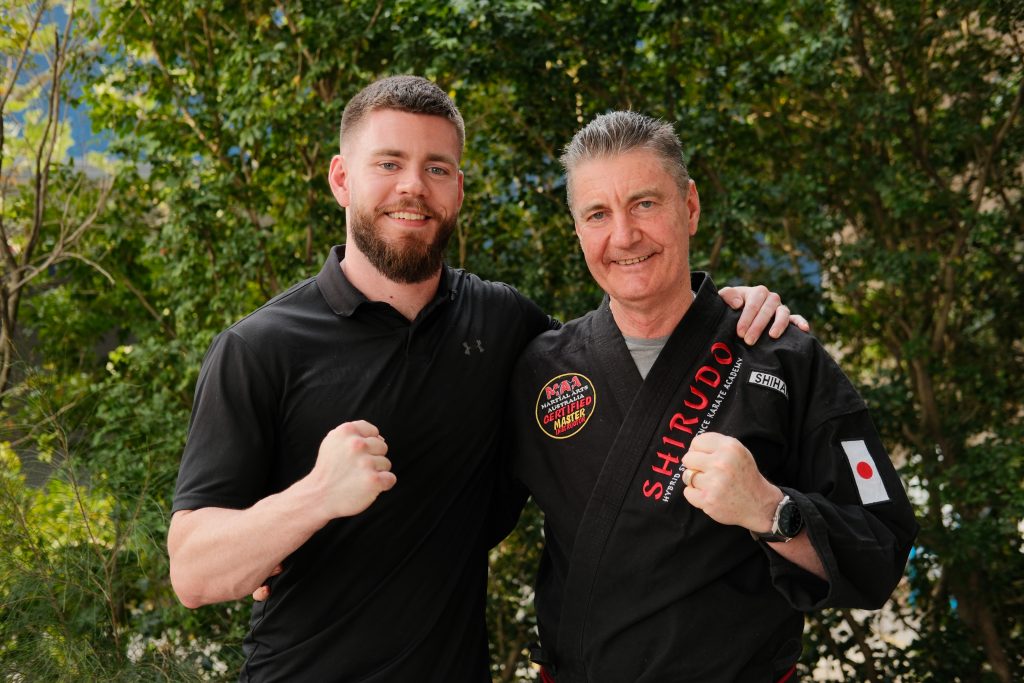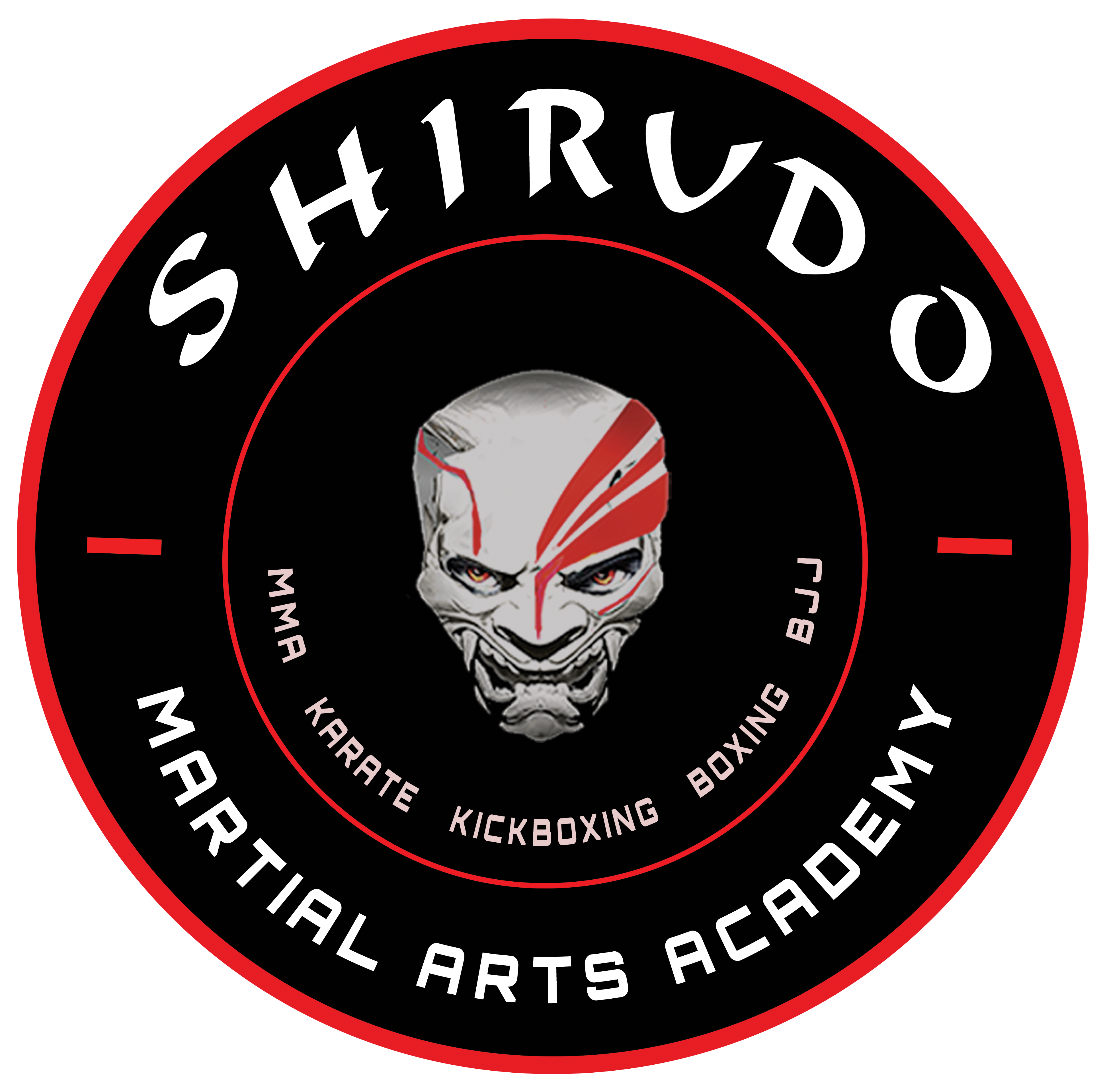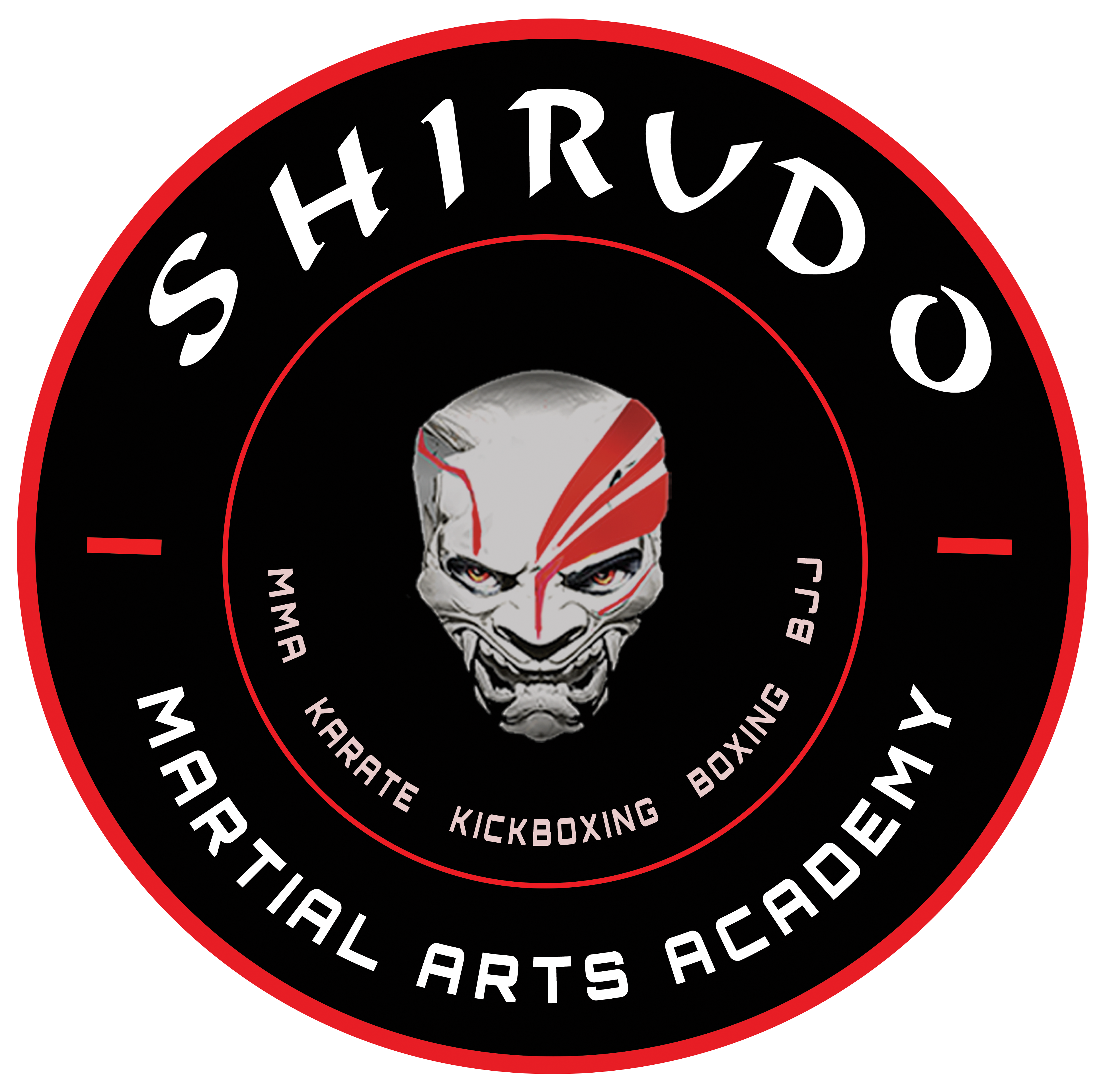THE SHIRUDO MARTIAL ARTS ACADEMY
December 2024 marks a milestone for the Shirudo Martial Arts Academy as it celebrates 10 years of dedication to martial arts excellence. Since 2014, Shirudo has become a hub where students of all ages, genders and levels come together to learn, grow, and push boundaries. Rooted in traditional martial arts values and adapted for modern applications, Shirudo provides a training environment that fosters skill development, confidence, resilience, and purpose. Over the past decade, it has grown beyond a training facility into a thriving community focused on personal and collective growth.
THE FOUNDERS – A FATHER AND SON TEAM


Shihan Paul With over 40 years of martial arts mastery, he has studied and trained in many different Martial Arts disciplines, Including Judo, Hapkido, Kung Fu, Kickboxing and Boxing. Shihan Paul is the heart and soul of the Shirudo Martial Arts Academy. Holding black belts in Karate, Han mu do and Shirudō-Ryū, Pauls depth of knowledge and passion for martial arts ensures that Shirudō will continue to grow for the next decade and beyond.
Coach Liam A martial artist since age five, Coach Liam is a powerhouse of experience and competition. As head MMA coach at Shirudo his championship pedigree and keen understanding of both street self-defence and competitive fighting elevate Shirudō to a cut above other Academy’s. His insight bridges the gap between real-world application and competitive excellence, ensuring that every student is equipped for success, in the street or in the ring.
FOUNDING MEMBERS THAT HAVE HELPED SHAPE SHIRUDŌ-RYŪ OVER THE LAST DECADE Chief instructor Sensei John 3rd Dan Black Belt Shirudō-Ryū and – 2nd Dan Black Belt in Taekwondo Sensei Alan 2nd Dan Black Belt Shirudō-Ryū: Sensei Andrew 2nd Dan Black Belt Shirudō-Ryū – 2nd Dan Black Belt Kyokoshin Karate
WHAT SETS SHIRUDO MARTIAL ARTS ACADEMY APART?
Shirudo Martial Arts Academy offers a rare opportunity to train in five distinct martial arts styles under one roof:
Shirudō-Ryū – (Signature & Founding Style)
Origins: Shirudō-Ryū is a modern hybrid martial art that blends traditional Karate and techniques from a variety of other disciplines, such as Hapkido, Judo, and Japanese Jiu-Jitsu. The name *Shirudō* comes from the Japanese words *Shiru* (meaning “shield”) and *Ryū* (meaning “style” or “system”), thus translating to “Shield System.” This embodies the philosophy of using martial arts to create a protective barrierDeveloped in Australia in 2014 by Shihan Paul, Shirudō-Ryū draws on over 40 years of Shihan Paul’s extensive study and cross-training in various martial arts. He holds Black Belt rankings in Karate, a traditional and powerful Japanese martial art, as well as in Han Mu Do, a Korean self-defence system combining Hapkido and Taekwondo. In addition to Karate and Han Mu Do, Shihan Paul has trained in Judo, Aikido, Kung Fu, Kickboxing and Boxing. He currently holds a 6th Dan Black Belt in Shirudō-Ryū, which is officially recognised by Martial Arts Australia. In 2019, Shihan Paul was honoured with a prestigious Black Sash Award from the Shaolin Temple in China, recognising his significant contributions to the martial arts community in Australia.
Style: After years of studying various martial arts, Shihan Paul spent more than two years developing the comprehensive curriculum and style of Shirudō-Ryū, which continues to evolve today with the experience and input of his senior Black Belt instructors. While Shirudō-Ryū is rooted in traditional martial arts, it has been specifically designed for the modern world, combining time-honoured techniques with contemporary needs. The core of Shirudō-Ryū is influenced by two of the four main Karate styles practiced in Japan today: Gōjū-ryū, founded by Chōjun Miyagi, and Shitō-ryū, founded by Kenwa Mabuni. Gōjū-ryū integrates both hard and soft techniques, blending Okinawan and Chinese martial arts to create a flowing, circular style. Shitō-ryū, meanwhile, features eight-directional movements with an emphasis on circularity and breathing power. Shirudō-Ryū is distinctive in its hybrid approach, combining both hard and soft techniques, as well as circular and linear movements.
The curriculum incorporates: powerful strikes, punches, kicks, and blocks, with a focus on speed, economy of movement, adaptability, and mobility. It also places a significant emphasis on close-range combat, breath control, and the philosophical principles of harmony, all drawn from Karate and Kickboxing.
Additionally, Shirudō-Ryū also incorporates softer techniques, such as open-hand circular strikes, joint locks, grappling, takedowns, and throws, derived from the most practical and effective aspects of Japanese Jiu-Jitsu, Hapkido, and Judo. The system’s approach is grounded in practicality and adaptability, focusing on real-world self-defence and personal development. It prioritizes control over aggression or sport-focused striking, teaching students how to manage a range of combat scenarios, from street defence and dealing with multiple attackers to strategies for confined spaces or bullying situations.
- Shirudō-Ryū emphasises precision, power, timing, and flow—qualities that are central to its philosophy and effectiveness as a self-defence system for today’s martial artist.
- SHIRUDO – JIU-JITSU (BJJ)
- Origins: Brazilian Jiu-Jitsu (BJJ) evolved from Japanese Jujutsu and Judo. In the early 20th century, Mitsuyo Maeda introduced Judo to the Gracie family in Brazil, where Carlos and Helio Gracie developed BJJ, focusing on ground fighting and submissions.
- Style: BJJ emphasises grappling, joint locks, chokes, and submissions, enabling smaller fighters to overcome larger opponents. Key techniques include: Submissions: Joint locks and chokeholds that force an opponent to tap out. Positions: Control through guard, mount, side control, and back control. Sweeps & Takedowns: Reversing positions and taking fights to the ground. Leverage & Technique: BJJ relies on technique, timing, and leverage, not strength. It is a cornerstone of modern MMA due to its focus on practical self-defense and adaptability.
- SHIRUDO – KICKBOXING Origins: Kickboxing emerged in the 1960s, combining elements of Karate, Muay Thai, and Western boxing. It gained prominence in Japan and later in the U.S. in the 1970s. Muay Thai’s influence brought elbows, knees, and clinch work into the mix. Style: Kickboxing incorporates punches, kicks, elbows, and knees, focusing on dynamic striking and defensive techniques. Key elements include: Punching: Jabs, crosses, hooks, and uppercuts from Western boxing. Kicking: Roundhouse, front, low, and high kicks. Elbows & Knees: Close-range strikes, particularly in Muay Thai-influenced styles. Footwork & Defense: Agility in evading and countering attacks. Kickboxing combines power and agility, offering both fitness and self-defence benefits.
- SHIRUDO BOXING Origins: Boxing has roots in ancient civilizations, with formalization in Ancient Greece and Rome. Modern boxing began in 18th-century England, evolving with the introduction of formal rules and gloves, culminating in the Marquess of Queensberry Rules in 1867. Style: Boxing is a technical sport centered around powerful strikes and defense. Key components include: Stance: Orthodox and southpaw for optimal offensive and defensive positions. Punching: Jabs, crosses, hooks, and uppercuts for effective strikes. Footwork: Maintaining distance, pivoting, and sidestepping. Defence: Blocking, slipping, weaving, and parrying punches. Boxing is known for its emphasis on strategy, conditioning, and mental toughness.
- SHIRUDO – MMA Origins: MMA evolved from a blend of various martial arts, including boxing, kickboxing, Brazilian Jiu-Jitsu (BJJ), and wrestling. Its modern form emerged in the 1990s with the UFC, where cross-training in multiple disciplines became essential. Style: MMA combines striking and grappling, with fighters trained in diverse disciplines to excel in all phases of combat: Striking: Techniques from boxing, kickboxing, Muay Thai, and Taekwondo. Grappling: BJJ for submissions, wrestling for control, and Judo for throws. Transitions: Fluid movement between striking and grappling phases. Cage Control: Using the octagon to limit opponent movement. Strategy: High fight IQ to adapt and outsmart opponents. MMA challenges athletes to be versatile and adaptable, making it one of the most demanding and exciting sports today.
This diversity enables students to tailor their martial arts journey, whether refining a specific skill set or exploring multiple disciplines for a well-rounded approach. Shirudo’s inclusive and flexible environment ensures students (regardless of skill level) receive the support needed to thrive and reach their goals.
Providing a full circle supportive environment for families and individuals to learn and grow together, with classes & programs for All Ages, Genders, and Skill Levels. THE SHIRUDO MARTIAL ARTS ACADEMY fosters Community Values and Integrity, for modern times.
OUR CLASSES:
ADULT-FOCUSED CLASSES at Shirudo Martial Arts Academy:
Shirudo Martial Arts Academy celebrates a decade of empowering adults through martial arts. Our adult classes offer a blend of self-defence, fitness, and personal development, suitable for all levels of experience.
Why Adults Choose Shirudo Martial Arts Academy: Comprehensive Training with 5 styles to choose from, applying Real-World Application: Whether you choose one style or decide on all styles you will Learn techniques for personal safety and confidence in everyday situations. Fitness & Well-Being: Improve strength, flexibility, endurance, and mental clarity. Discipline & Respect: Gain life skills like goal setting, responsibility, and respect in a supportive community.
TEENAGER-FOCUSED CLASSES at Shirudo Martial Arts Academy:
Shirudo Martial Arts Academy offers specialized classes for teenagers, blending fitness, self-defence, and personal growth in a supportive environment.
Why Teenagers Choose Shirudo Martial Arts Academy for Kickboxing, Jiu Jitsu and Shirudō-Ryū Personal Growth: Build confidence, resilience, and mental toughness. Self-Defence: Practical techniques to handle real-life situations. Physical Fitness: Develop strength, flexibility, and coordination. Focus & Stress Relief: Improve mental clarity through structured training.
CHILDREN’S CLASSES in Shirudō-Ryū
Shirudo Martial Arts Academy has spent a decade nurturing kids aged 5-12 Not only through martial arts training, but also personal development building confidence, discipline, focus and respect in a fun martial arts learning environment that can transition into a positive, successful and happy life.
Why Kids Love Shirudō-Ryū: Confidence & Discipline: Develop self-assurance and strong work ethic. Physical Fitness: Improve strength, coordination, and flexibility. Social Skills: Build teamwork, respect, and friendships. Anti-Bullying: Practical self-defence to stand up for themselves in a non-violent manner. Give your child the tools to succeed in martial arts and in life!
FAMILY-FOCUSED CLASSES Shirudō-Ryū
Shirudo’s family classes are designed for all ages, offering flexible classes, a safe environment, and a strong focus on discipline, teamwork, and health. Shirudō-Ryū Is one of the only styles that has family classes of Parents and Children training together.
Why families love Shirudō-Ryū with its family core values of: Discipline & Respect: Encouraging personal responsibility. Goal Setting: Progress through milestones. Teamwork: Building social skills through group activities. Health & Fitness: Improve strength, flexibility, and mental well-being. Promote a healthy lifestyle with fitness and mindfulness. Family and Community Engagement: Family events, charity programs, and parent involvement.
Shirudo’s unique holistic approach to martial arts training, self-defence, fitness, and personal growth for all Ages, Genders and skill levels is what sets it apart from other martial arts academies.
We invite you to visit us, meet our instructors, and see why so many people trust us to guide them on their martial arts journey.
BE PART OF SOMETHING EXTRORDINARY
CONTACT US TODAY!! 1300 990 525
learn more about our programs, schedule a visit or book a free trial class.

